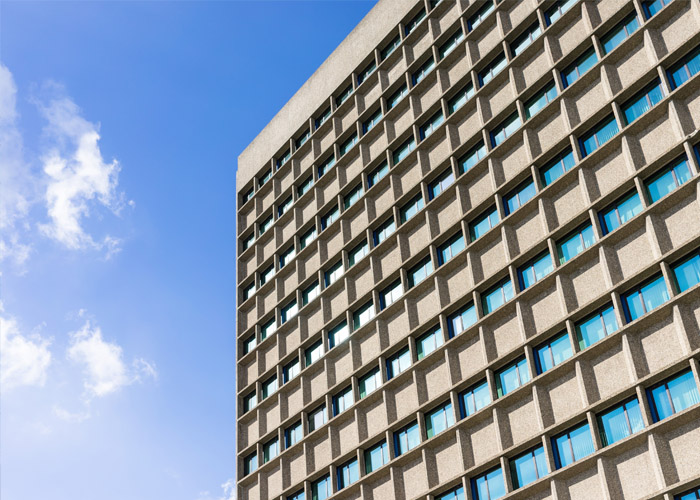The Triggers Driving Today’s Data Center Transformations
But given the massive and disruptive changes impacting data centers and information technology (IT) operations, incremental improvement may not be enough. This is because the forces acting upon data centers and what is expected from them have changed in recent years. Whereas data centers once revolved around supporting internal IT systems and data—acting like big digital filing cabinets for enterprises—their role is changing rapidly. Today, data centers need to become agile foundations for companies transforming into digital businesses. To grow as a digital, connected enterprise, companies need a foundation for digital commerce, Cloud services, social media and digital marketing, Big Data analytics, and Internet-of-Things (IoT) information streams.
Analysts at Gartner have dubbed the confluence of social, mobile, Cloud, and Big Data information as the “nexus of forces” while IDC describes these technologies as encompassing a “3rd platform.” In a set of data center predictions for 2015, IDC envisions that by 2016, 65 percent of data center infrastructure investments will target creation of 3rd platform systems and insights, rather than maintaining traditional systems of record.
However you want to slice it, we all know that Cloud computing, the IoT, mobile/social and Big Data are highly disruptive forces that will drive data center transformation. In short, data centers need to change, and quickly.
So how can we sum up the factors driving the need to transform? There are four key triggers behind data center transformation. Let’s look at these, and the impacts they carry:
- Disruptive technologies. Use of technologies such as Big Data and IoT (and the associated monetization of these technologies) will grow rapidly and place new burdens on data centers, which will have to remain resilient and reliable in the face of these new demands. Gartner estimates that 4.9 billion assets will be part of the IoT this year, and that by 2020, there will be 25 billion Internet connected “things” in use. These big numbers may seem far fetched, but for a consumer electronics company looking to track smart products in the field, or a utility company looking to monitor IoT-connected assets, there is little doubt that the IoT and resulting Big Data analysis will place significant burdens on the data center. Greater flexibility and monitoring will be needed to support these disruptive technologies.
- Supporting business growth. Companies will need to transform their data centers from back end cost centers to agile, strategic assets for the new ways of growing the business. In some recent planning assumptions for IT infrastructure, Gartner advises that by 2017, customers’ mobile behavior will drive mobile commerce in the U.S. to 50 percent of U.S. digital commerce revenue. Data centers need to be enablers of this type of growth, not a barrier to it.
- Taming power costs. Data centers have become more energy efficient over the last several years. These gains have to be kept in place and improved upon even while infrastructure is being adapted to disruptive new technologies. In a recent data center study from Mortenson, a facility construction and design firm, when asked to describe the one thing they would most like to change about their data center, the leading response was “more energy efficient,” followed by “better cooling/HVAC system.” With energy consumption by data centers at a global average of 2-3% and 7-9% in Singapore, there is little doubt that worldwide, curbing energy costs and enhancing efficiency remains a key trigger.
- Regulatory compliance. Data center guidelines and regulations are becoming more prevalent and more stringent. A few examples in Singapore include the Infocomm Development Authority (IDA) ICT Resilience Standards; Monetary Authority of Singapore (MAS) Threat and Vulnerability Risk Assessment (TVRA) guidelines; and IDA SS 564, a standard for “green” data centers which stresses a continuous improvement methodology. Other countries also may have guidelines on data center efficiency, and with major breaches in corporate security making headlines in 2014, there is sure to be more stringent requirements around data center security.
Perhaps there are other triggers one might want to add to this list, but without question, the four factors above are all significant drivers. The more practical question about these triggers is, “what can we do to respond to them?”
In truth, there are many technical elements that might be part of a data center transformation, but at the high level, the best response is based on sound methodology. Note, for example, that when it comes to guidelines for green data centers in Singapore, the rules aren’t overly prescriptive when it comes to specific equipment. Instead, the emphasis is on a methodology based on a Plan–Do–Check–Act (PDCA) continual improvement framework. With all these triggers, it’s important to adopt a sound methodology and roadmap approach
In a follow-on post, I’ll explain the methodology Schneider Electric suggests for data center transformations. Until then, ask yourself this question: is your data center ready to support growth in this age of disruptive technologies like the IoT, digital commerce, Cloud, and Big Data? If the answer is no, then it’s time to start planning your response.






